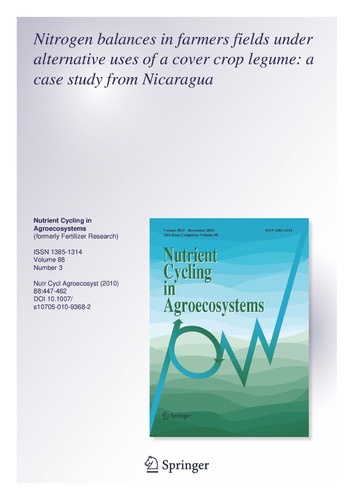Nitrogen balances in farmers fields under alternative uses of a cover crop legume: a case study from Nicaragua
Canavalia brasiliensis (canavalia), a drought tolerant legume, was introduced into the smallholder traditional crop-livestock production system of the Nicaraguan hillsides as green manure to improve soil fertility or as forage during the dry season for improving milk production. Since nitrogen (N) is considered the most limiting nutrient for agricultural production in the target area, the objective of this study was to quantify the soil surface N budgets at plot level in farmers fields over two cropping years for the traditional maize/bean rotation and the alternative maize/canavalia rotation. Mineral fertilizer N, seed N and symbiotically fixed N were summed up as N input to the system. Symbiotic N2 fixation was assessed using the 15N natural abundance method. Nitrogen output was quantified as N export via harvested products. Canavalia derived in average 69% of its N from the atmosphere. The amount of N fixed per hectare varied highly according to the biomass production, which ranged from 0 to 5,700 kg ha?1. When used as green manure, canavalia increased the N balance of the maize/canavalia rotation but had no effect on the N uptake of the following maize crop. When used as forage, it bears the risk of a soil N depletion up to 41 kg N ha?1 unless N would be recycled to the plot by animal manure. Without N mineral fertilizer application, the N budget remains negative even if canavalia was used as green manure. Therefore, the replenishment of soil N stocks by using canavalia may need a few years, during which the application of mineral N fertilizer needs to be maintained to sustain agricultural production.

